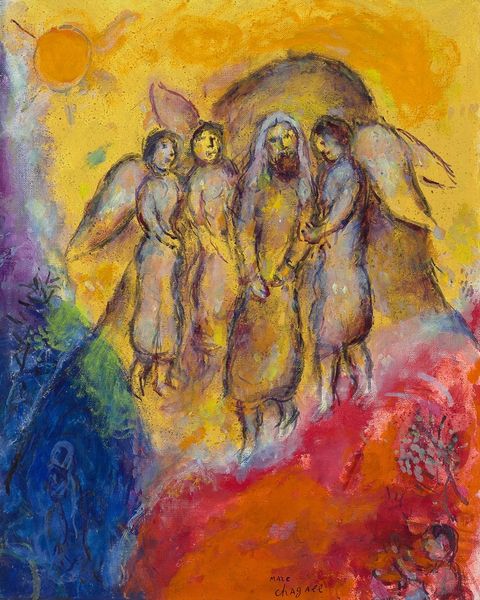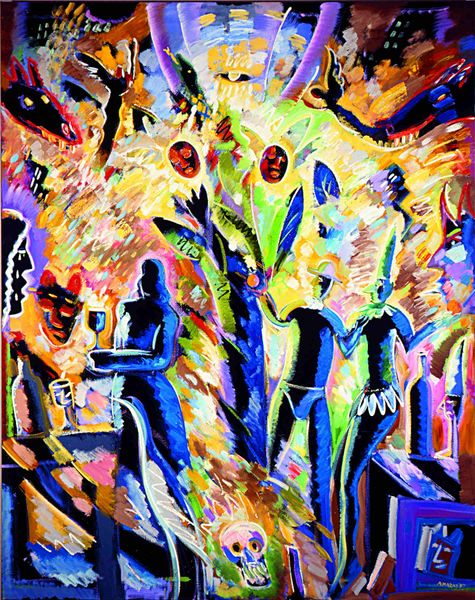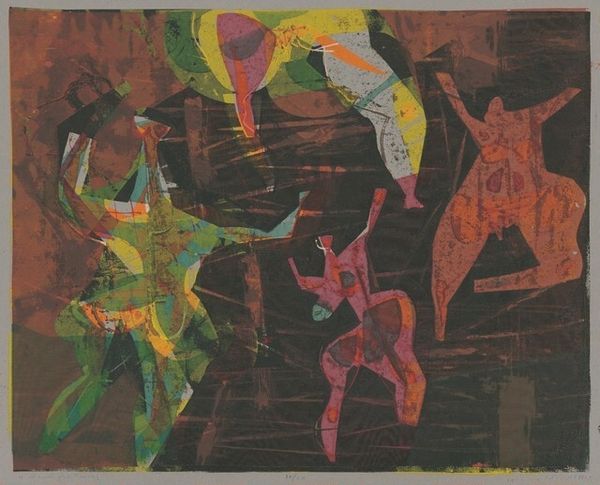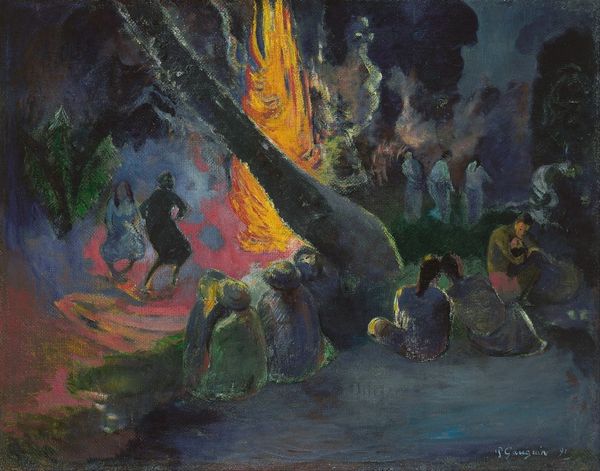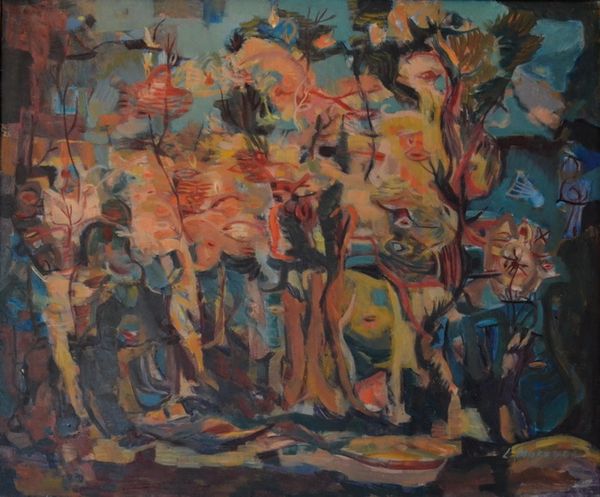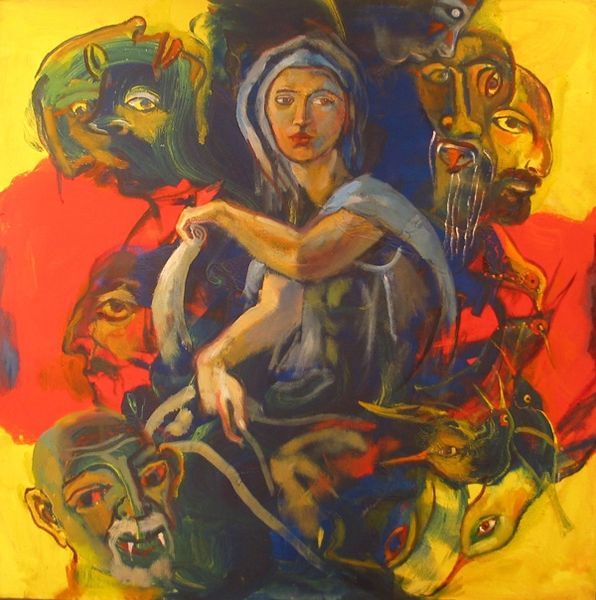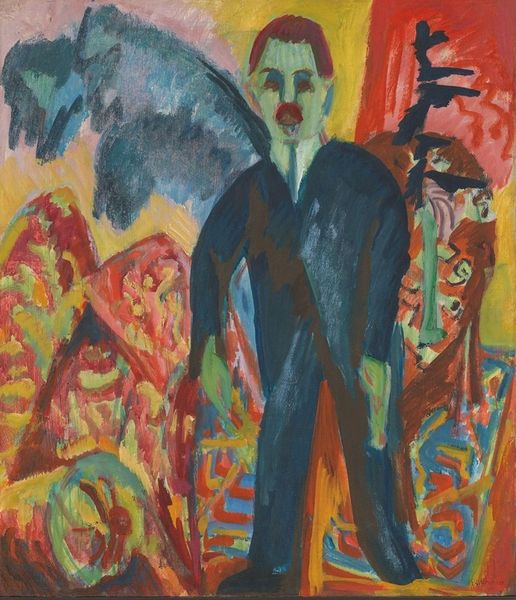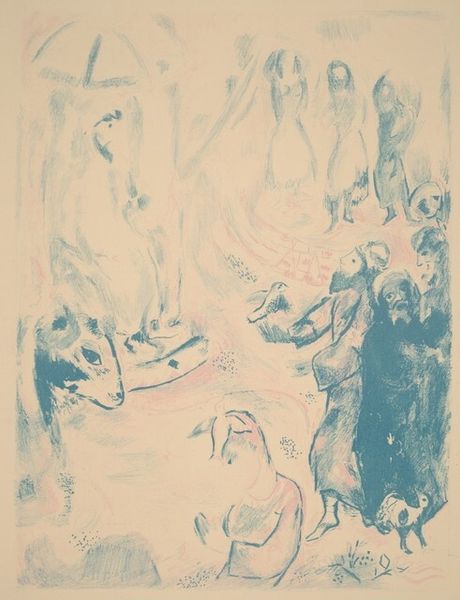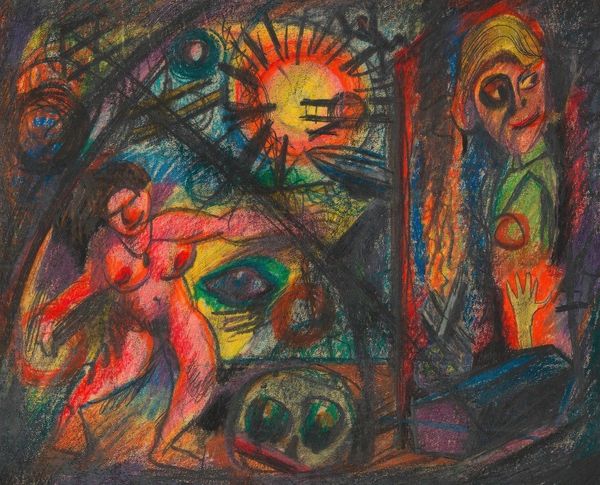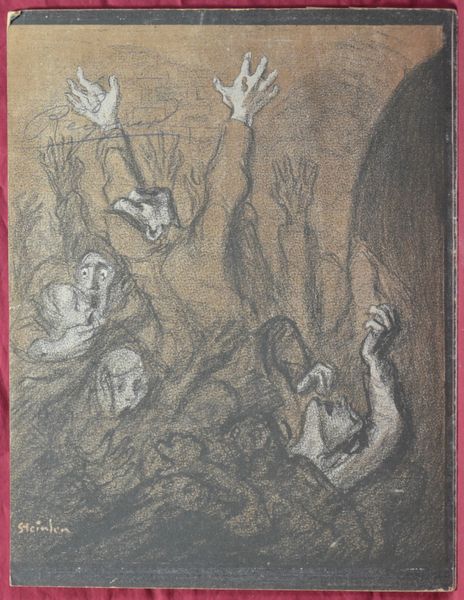
tempera, painting, oil-paint, mural
#
narrative-art
#
tempera
#
painting
#
oil-paint
#
figuration
#
oil painting
#
mexican-muralism
#
history-painting
#
mural
Copyright: Public domain
Curator: I find this piece so arresting. This is Jose Clemente Orozco's "El Brujo," or "The Sorcerer," painted in 1946. The medium is tempera and oil, giving it a very particular, almost fresco-like quality. What do you make of it? Editor: It hits me as apocalyptic, a visual scream. The limited palette, all fiery reds and oranges, suggests immense heat, both physical and emotional. Are those figures huddled at the bottom offering sacrifices? It is ominous! Curator: Yes, definitely sacrifices. The upraised arm, holding what looks like a ceremonial vessel, it's all incredibly ritualistic. Orozco, like many Mexican muralists, was deeply interested in pre-Columbian culture, so it feels like a reckoning with ancient power, and perhaps the abuses of that power. Editor: Absolutely. The sorcerer figure himself seems so detached, almost spectral, while the robed figure in the background is looming large with a judgmental stare. He's wrapped in shadows, literally embodying the weight of tradition and authority. It makes me wonder if this sorcerer is rebelling against some order. The little ones almost huddling by its feet give a feeling that it's protecting them. Curator: I agree. There’s a definite tension there, the old versus the new, perhaps. And consider the figures themselves: stylized, almost skeletal, devoid of individual features. They represent a collective, a society under some kind of duress. It really brings forth a feeling of anguish. It's like they are paying the price of ignorance in this dark setting. Editor: The facelessness is crucial. It strips them of their individuality, making them representative of all people throughout time. The artwork goes from showing a certain time to representing a broader and larger narrative. In some ways it seems more truthful as the faceless forms turn out to be quite striking. But even deeper is this notion of historical echoes and cyclical patterns of power, right? We tend to see things repeating throughout centuries... Curator: Precisely. It really hits you when you get a sense of cyclical patterns. That's Orozco for you – always challenging us to confront uncomfortable truths about ourselves and our history through sheer emotion. I wonder, what will be taken from this image in the future, how it will be interpreted? Editor: Indeed. The power of symbols to persist, and to acquire new resonance over time… "El Brujo" isn’t just a painting, it’s a prophecy. I see layers within the art, and it offers a reflection, almost timeless.
Comments
No comments
Be the first to comment and join the conversation on the ultimate creative platform.
